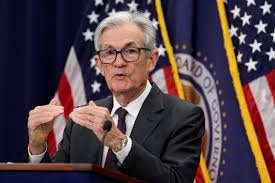The US Federal Reserve lowered interest rates for the second consecutive month on Wednesday, signalling growing concern over the country’s slowing economic momentum and persistent uncertainty.
The Federal Open Market Committee (FOMC) voted 10-2 in favor of a 25 basis point cut, reducing the benchmark federal funds rate to a range of 3.75%–4%. Fed Governor Stephen Miran supported a deeper 0.5% cut, while Kansas City Fed President Jeffrey Schmid preferred keeping rates unchanged.
After months of resistance to political pressure from President Trump, the central bank began easing policy in September, marking its first rate reduction since December 2024. Officials have hinted at the possibility of at least one more cut before year-end, depending on incoming economic data.
However, Wednesday’s decision came under extraordinary conditions. The ongoing government shutdown, now in its fourth week, has suspended the release of key federal statistics, including the October jobs report. In its official statement, the Fed said:
“In support of its goals and in light of the shift in the balance of risks, the Committee decided to lower the target range for the federal funds rate by 1/4 percentage point to 3-3/4 to 4 per cent.”
Without access to official government data, the Fed relied on private-sector research, delayed inflation reports, and its own business surveys to gauge the economy’s performance.
Despite the data gap, financial markets widely anticipated the rate cut, as the central bank faces a delicate balancing act between supporting growth and containing inflation.
The US labor market has shown clear signs of cooling in 2025, adding an average of just 29,000 jobs per month — the slowest pace since the pandemic — while unemployment has risen to 4.3% from 4% in January.
Meanwhile, inflation remains stubborn, with the consumer price index (CPI) climbing 3% year-on-year in September, still above the Fed’s 2% target.
As policymakers weigh the risks of a prolonged slowdown against lingering price pressures, analysts expect the Fed to maintain a data-dependent, meeting-by-meeting approach in the months ahead.

